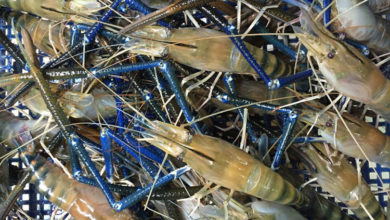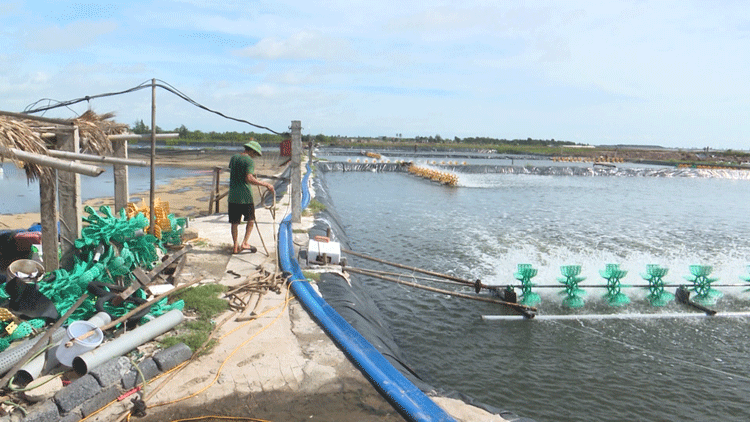Recirculating intensive shrimp farming: 50 tons per hectare, minimal pollution
The innovative recirculating aquaculture system (RAS) for shrimp farming in Ca Mau is proving to be a cost-effective, environmentally friendly solution that enhances productivity and reduces operational expenses.
In recent years, many households in Ca Mau have adopted RAS in intensive shrimp farming. This method is being promoted by local authorities as a sustainable and efficient alternative to traditional practices.
Environmental management and water quality play crucial roles in the success of intensive shrimp farming. Traditionally, farmers treat water before introducing it to ponds and frequently replace it to ensure shrimp growth, a process that can consume up to 30% of production costs.
To address this, Tran Thai Bao, a farmer in Tan Hung Dong Commune, has successfully implemented a low-water-exchange RAS model. With a 6,000-square-meter area, he has dedicated approximately 2,000 square meters to shrimp ponds and the rest to recirculating filtration systems. Water is treated only once to eliminate pathogens, and wastewater from daily siphoning flows through multiple filtration layers and into fish ponds for further processing.

The filtered water then passes into a bioreactor tank containing locally cultivated beneficial microorganisms activated by aeration. This process removes residual pathogens and ensures safe water for shrimp farming. The final step involves further water polishing using seaweed and algae ponds before recycling it back into shrimp ponds.
Bao explained, “By cultivating local microorganisms, I ensure that beneficial bacteria thrive and sustain themselves. This system significantly reduces chemical use while maintaining water quality for shrimp farming.”
The RAS model not only minimizes production costs but also promotes faster shrimp growth, shortening the harvest cycle. In just 90 days, Bao’s super-intensive shrimp farm achieved a yield of 50 tons per hectare per crop, with whiteleg shrimp reaching an average weight of 20 shrimp per kilogram.
Similarly, Tran Van Phan, a farmer in Luong The Tran Commune, transitioned to the low-water-exchange RAS model in 2023. Managing a 1-hectare farm, he saved over 100 million VND per crop on water treatment chemicals. The economic benefits of this method far outweigh those of traditional farming while significantly reducing environmental impact.
Phan noted, “Previously, traditional farming relied on external water sources, which, if contaminated, could cause shrimp diseases. With the recirculating system, water remains clean and stable, providing a better environment for shrimp growth.”
Le Van Su, Vice Chairman of the Ca Mau Provincial People’s Committee, commended the widespread adoption of RAS, highlighting its advantages in reducing input costs and mitigating environmental pollution.
“This model has proven highly effective for farmers. Moving forward, we will continue to promote its adoption to safeguard the environment, lower production costs, and enhance the value of farmed shrimp,” Su stated.
With its ability to combine sustainability, profitability, and environmental conservation, the RAS model is setting a new benchmark for shrimp farming in Ca Mau and beyond.
VFM






